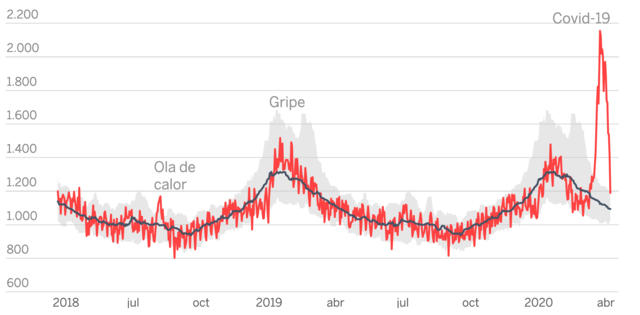

Emergency |
| Frankly
speaking: I would have had no problem with simply ignoring this new
respiratory disease virus. Only in retrospect we will be able to decide
whether I was right or wrong. Even severely affected Italy may produce
no more victims than sadly known from the usual influenza epidemics
flooding the world each year. So what? The severe measures to limit
virus spread may even cause more damage than the virus itself. |
| The
critical difference lies in the "may"s. We just don't know exactly, not
yet. The only reasonable means to approach an unknown threat is
caution. The true properties of this virus reveal themselves only
during the course of its actual worldwide performance. What we saw up
to now was intimidating enough. It takes up speed once it has started,
this agent, numbers rising by factors, not digits - health officials in
charge rightfully are getting nervous. |
| The
situation should remind us that quite similar spreads of acute
respiratory diseases have been covering the world periodically for
decades, with the only difference that we didn't care. During these
other spreads, if we would have taken record as painstakingly as now,
the plain numbers might have rung the alarms already then. It is
difficult to ignore this sort of excitement. It is even more contagious
than the virus itself. |
| For
several reasons, the situation now is different from the past epidemics
we were used to. To some degree, this is due to recent improvements in
molecular biology techniques for easy virus detection. What we
reconstructed ex post during earlier times, we now are able to watch
with short delay. Now, since it is feasable, why shouldn't we take
advantage? This virus may be more contagious then earlier ones, and /
or it may be deadlier. Why should we take the risk? |
| Even
if it should turn out, in the end, that this uninvited guest finds an
inconspicuous place in the long row of his precursors, we will have had
a good opportunity for a test-run: One day a real villain might enter
the stage,
with most of our lives on stake. Then, our chances of survival could depend on the lessons we learn now with CoViD-19. |
| We should consider the whole enterprise a global civil emergency training - a quite expensive one, by all means. |
| 2/20 < MB 3/20 > 7/20 |

| wikimedia |
| Addendum
(4/20): For Spain we expect as for now about 62 CoViD victims per
100.000, with similar numbers for Italy (58), London (75) and Belgium
(83), clearly outnumbered only by New York City
(209). The preceding little graph demonstrates for the most recent
Spanish records the significance of the actual epidemic. In Austria the
same number is actually estimated to 7.5 (seven point five). |
| Danis et al (2020) Cluster of coronavirus disease 2019 (Covid-19) in the French Alps. Clinical Infectious Diseases. https://doi.org/10.1093/cid/ciaa424 Dehning et al (2020) Inferring change points in the spread of COVID-19 reveals the effectiveness of interventions. Science doi: 10.1126/science.abb9789 Esteve et al (2020) National age and coresidence pattern shape COVID-19 vulnerability. Proc Natl Acad Sci USA 117: 16118-20 Gudbjartsson et al (2020) Spread of SARS-CoV-2 in the Icelandic Population. New Engl J Med. DOI 10.1056/ NEJMoa2006100 Jones TC, ..., Drosten C (2020) An analysis of SARS-CoV-2 load by patient age; preprint Lammers et al (2020) Correcting misperceptions of exponential coronavirus growth increases support for social distancing. Proc Natl Acad Sci USA 117: 16264-66 Moghadas et al (2020) The implications of silent transmission for the control of COVID-19 outbreaks. Proc Natl Acad Sci USA 117: 17513-15 Stadnytskyi et al (2020) The airborne lifetime of small spech droplets and their potential importance in SARS-CoV-2 transmission. Proc Natl Acad Sci USA Viner et al (2020) School closure and management practices during coronavirus outbreaks including COVID-19: a rapid systematic review. The Lancet 4: 397-404 Zhang et al (2020) Identifying airborne transmission as the dominant route for spread of COVID-19. Proc Natl Acad Sci USA 117: 14857-63 |